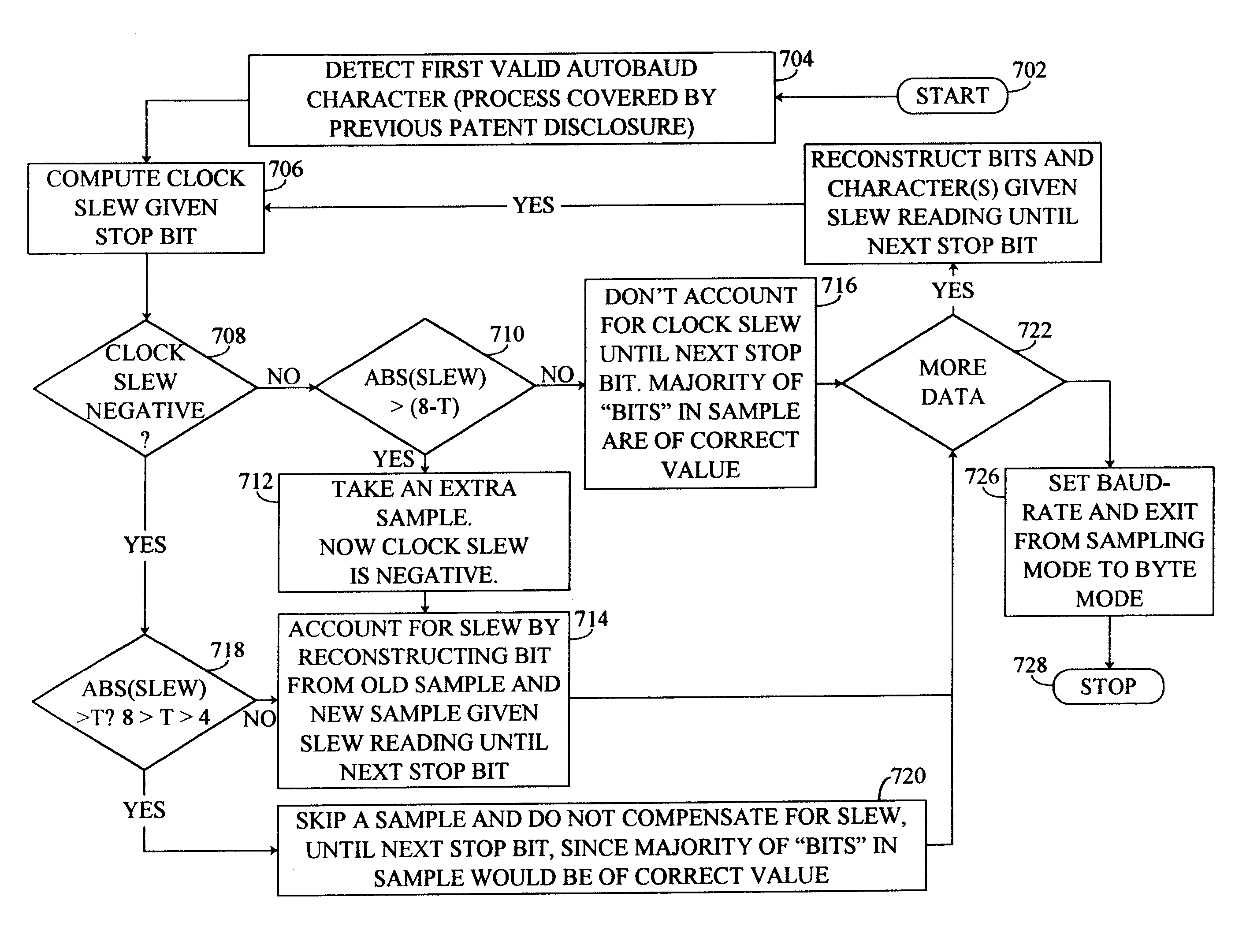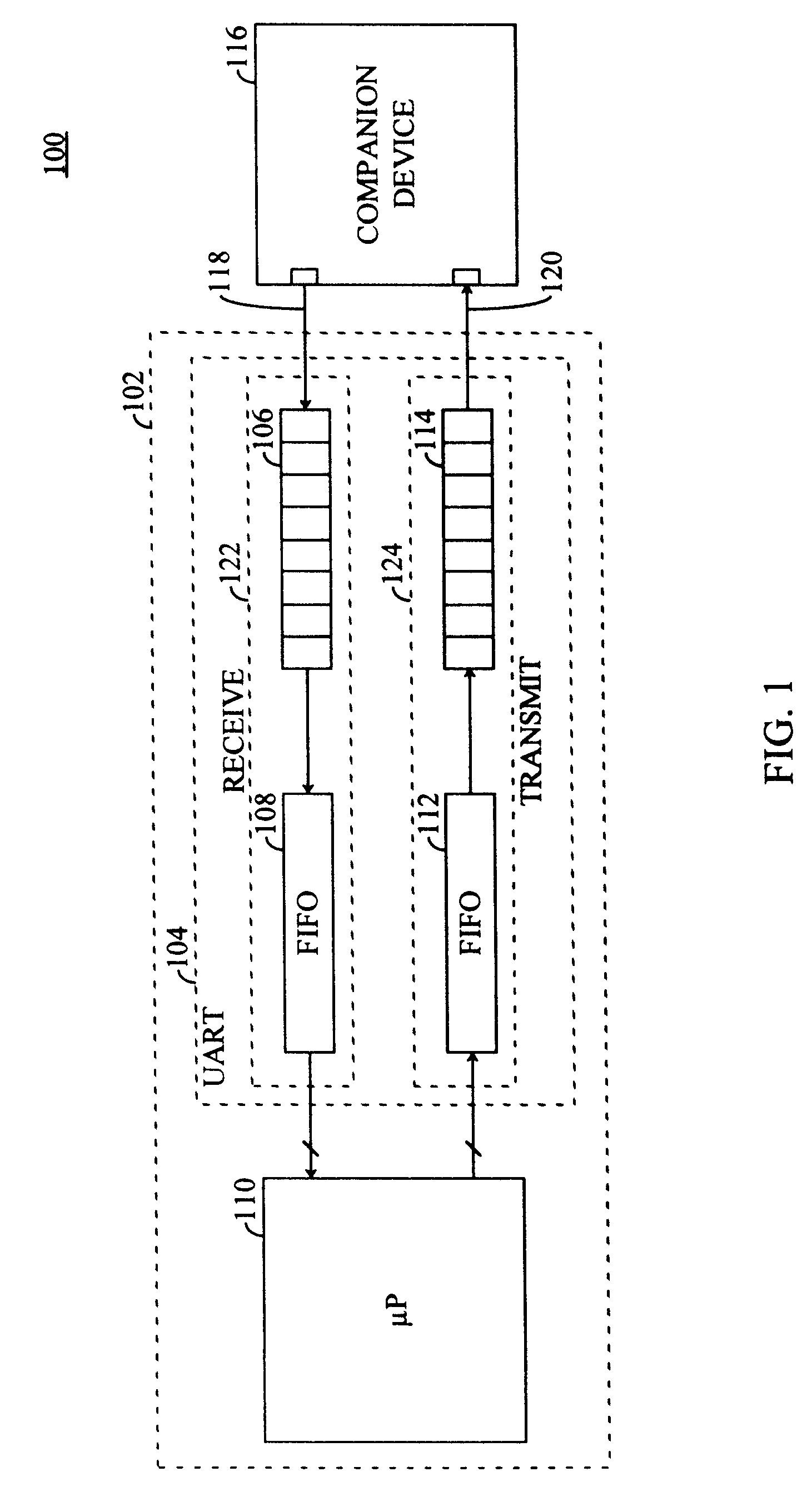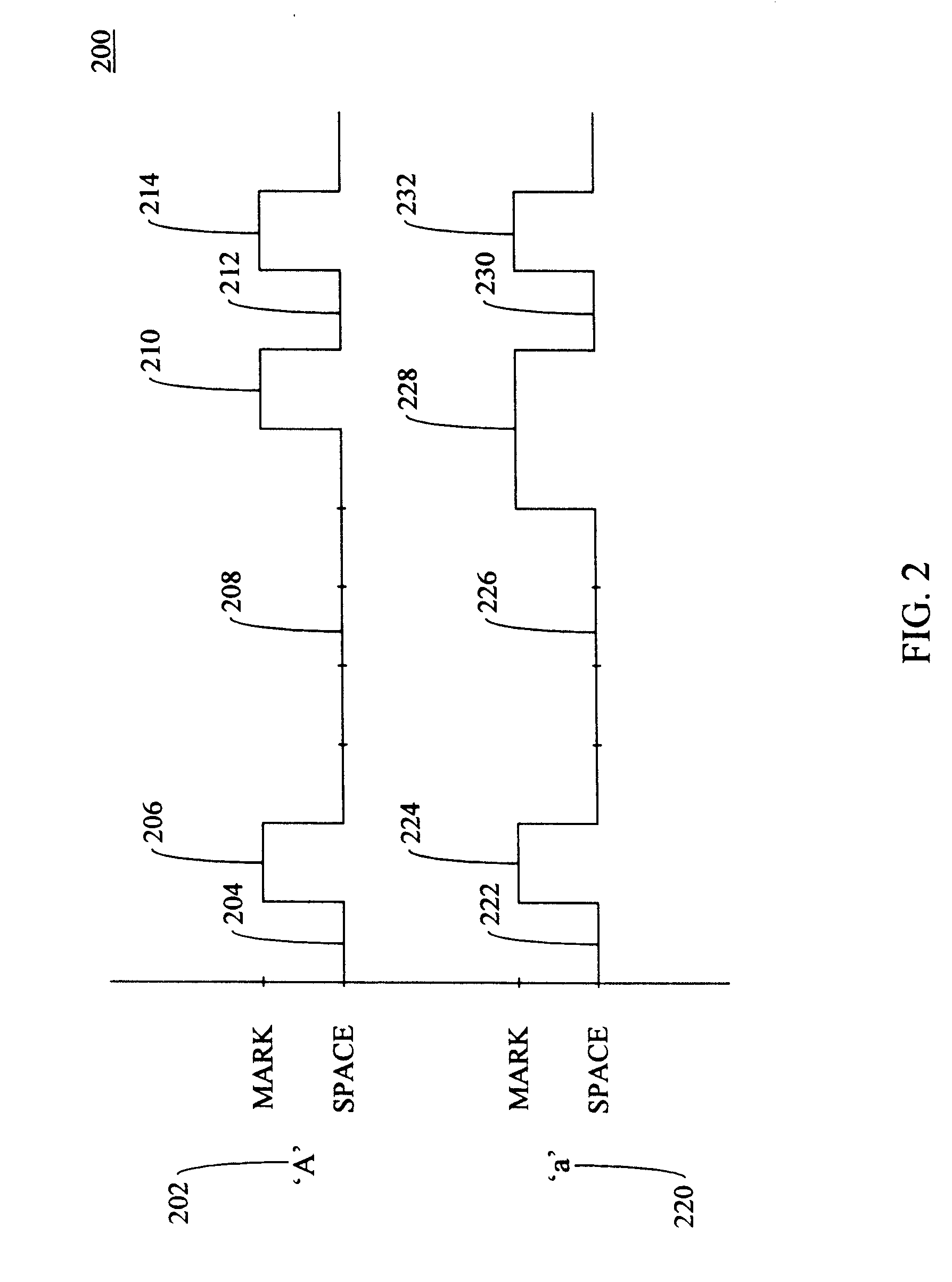Accounting for clock slew in serial communications
a serial communication and clock slew technology, applied in the field of mobile communications, can solve problems such as data loss or misinterpretation, and eventually will look like garbag
- Summary
- Abstract
- Description
- Claims
- Application Information
AI Technical Summary
Benefits of technology
Problems solved by technology
Method used
Image
Examples
example 506
shows the transmitting clock as being four (4) bits faster than receiving clock 504, resulting in a negative slew of -4 / 8. Thus, the sample contains part of the next character or next four bits. Here, one has a 50:50 chance of the sample being identified as a mark.
example 510
shows the transmitting clock as being six (6) bits faster than receiving clock 504, resulting in a negative slew of -6 / 8. Thus, the sample contains part of the next character or next six bits. With the transmitting and receiving clocks off by six bits, one would be unsure as to whether the sample is a mark or a space in this instance.
example 514
shows the transmitting clock as being eight (8) bits faster than receiving clock 504, resulting in a negative slew of -8 / 8. Thus, the sample contains all of the next character or next eight bits. At this point, the transmitting clock is completely out of synch with receiving clock 504. The sample will be identified as a space, and from this point on the data will look like garbage.
Four examples of positive clock slew 520, 524, 528, and 532 are shown in FIG. 5b. Example 520 shows receiving clock 504 as being two (2) bits faster than the transmitting clock, resulting in a positive slew of +2 / 8. Thus, the sample contains part of the previous character or previous two bits. Even though the receiving and transmitting clocks are off by 2 bits, one can still discern that the sample represents a mark.
PUM
 Login to View More
Login to View More Abstract
Description
Claims
Application Information
 Login to View More
Login to View More - R&D
- Intellectual Property
- Life Sciences
- Materials
- Tech Scout
- Unparalleled Data Quality
- Higher Quality Content
- 60% Fewer Hallucinations
Browse by: Latest US Patents, China's latest patents, Technical Efficacy Thesaurus, Application Domain, Technology Topic, Popular Technical Reports.
© 2025 PatSnap. All rights reserved.Legal|Privacy policy|Modern Slavery Act Transparency Statement|Sitemap|About US| Contact US: help@patsnap.com



